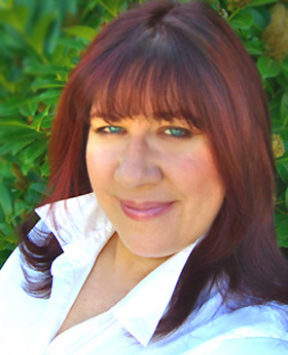If you have an interest in the Web, more than likely you will one day need to work on or build a Website.
You may be relieved to know you dont have to be a Mountain Dew-loving code jockey.
There are several comparatively-easy tools available to make it look like you are a hard-core coder, though.
These software tools are called WYSIWIG editors cleverly acronymed from What You See Is What You Get.
The top software comes form software vendors like Microsoft, Adobe and Macromedia.
Mark Asher is a man immersed in Web authoring culture. Asher is Group Product Manager for Web Publishing Solutions at Adobe Systems, where he is responsible for leading the GoLive® Product Management team.
He took a few minutes from his workday in San Francisco to offer his take on new and changing Website development technologies.
Q: What is the current state of Web site development?
Asher: The last few years have witnessed the Great Internet Build-Out. Last year, in particular, weve been reeling from the results of everybody re-trenching, and focusing on more productivity and efficiency in what their current Web sites are about.
With the economy turning down so harshly, there has been less money to invest in new technology and fewer resources to implement that technology.
A lot of Web sites have begun to focus more inward and on great user experiences without a lot of flash and sizzle in terms of distracting videos and Web banners.
Things we saw back in 1999 have taken a second seat to easy-to-use menus and helping users get to the information or purchase much more quickly.
Q: Is usability leading the development process?
Asher: Absolutely. The two-click rule is definitely the mantra.
Q: The bells and whistles were fun. Was that just a phase the Internet went through?
Asher: Probably. Remember, most Web designers come from the background of graphic design from print or some other type of design background.
Their creativity is still going to be a major part of what Web sites are about, but I think that their efforts are being refocused and, instead of being a large venue for an elaborate introductory movie, people are going to be focusing on navigation, menu items and how to clearly articulate icons for functionality. Thats the sort of creativity designers are focusing on.
Q: So we are skipping the intro, are we?
Asher: If a business thinks that people arent hitting the skip intro link, then they are fooling themselves.
Q: What are businesses doing now that they havent done in the past? Are they on the cutting edge or is it just the nuts and bolts?
Asher: There is certainly going to be the lunatic fringe that is still going to push the envelope in terms of introducing new technologies and elaborate ways to present content and structure on the Web browser.
Some of the things that Ive been looking out are things that break the old table metaphor, things around cascading style sheets, around XSLT, which is Extensible Stylesheet Language Transformation.
They are using these models as a way to break the boundaries of the old, rigid column and row metaphors that weve been using for such a long time in order to let users have a much richer experience. Providing a dynamic presence on a Website is also important.
Every day by see people cobbling Web sites together with databases to allow users to interact with their accounts online.
They certainly provide efficiency because if you provide a self-service channel, then, as a business, youre being much more cost-effective with your resources.
Q: How is the Web authoring software business coming to the rescue of developers?
Asher: Thats where the whole category of visual Web authoring tools plays a significant role.
Q: WYSIWYG editing (What You See Is What You Get)?
Asher: Exactly. The goal of all these tools is to allow designers to really optimize their creative skills while shielding them from being a code jockey.
Some tools focus a bit more on the programming sided; some focus a bit more on the design side.
Were seeing changes in the softwares ease-of-use when making the key functionality of designing a Website, whether it is cascading style sheets or integrating graphics and content more easily together, really optimizing it with an easy user interface lets the design professionals to really focus on design and not worry about the HTML or PHP or whatever the underlying code structure is.
We also see a lot of larger businesses separating roles. So the business logic, or the programming behind the Website, is often the task of a real dedicated programmer and the user experience is really the designers role.
Q: One of the big trends is the movement of Web-based content onto wireless mobile devices phones, Pocket PCs, Palms, PDAs. Do you see the online community needing to develop mobile additions to their Web sites?
Asher: I kind of feel like I was left at the altar with The Great Wireless Promise, especially in the U.S. There are other parts of the world where wireless is much more evolved.
Japan is probably the best example of a geography where people are actively using their wireless devices to surf the Web, buy tickets, even to buy Cokes out of the vending machines.
Here in the U.S., were still trying to get the network infrastructure straightened out.
The real promise of being able to have a browser-based Web experience on a wireless device is probably still 2-3 years away.
Were beginning to see the start of it with phones that can capture pictures finally – in this country.
The Web is mostly a PC-based experience. What folks are doing is compressing their Website down through these micro-browsers and you get what is essentially a left-margin forced experienceand its not pretty.
Q: What does Adobe have to offer in the Web authoring field?
Asher: Our primary offering is GoLive®, a WYSIWYG authoring tool for creative professionals who want to build any type of Website, whether its brand identity sites or dynamic sites, if theyre using a database as part of their Web project.
GoLive® allows you to build all those things in an easy, intuitive environment.
In particular, most people who create Web pages are using Photoshop or Illustrator or Acrobat as part of their content development. GoLive® is particularly optimized to help users get those files to the Web quickly and efficiently.
For more information about Adobe GoLive®, visit:
www.adobe.com/products/golive.
The full audio interview with Mark Asher can be heard at:
www.webtalkguys.com.
Dana Greenlee is co-host, producer and engineer of the WebTalkGuys Radio Show, a Tacoma-based radio and Webcast show featuring technology news and interviews.






